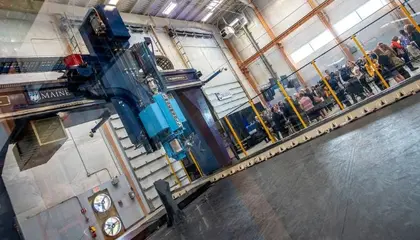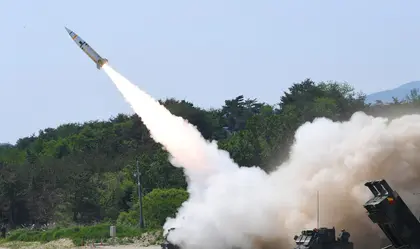US DoD (Department of Defense) Assistant Secretary of Defense for Acquisition William LaPlante has announced the US has sent large 3D printers which will allow Ukraine to manufacture its own spare parts on the battlefield and other necessary equipment for troops on the front line.
But there is likely to be much more Ukraine may be able to do with the technology particularly in the field of drone manufacture, in general, and especially for naval drones that could have a major influence on the war against Russia’s Black Sea Fleet.
JOIN US ON TELEGRAM
Follow our coverage of the war on the @Kyivpost_official.
“We just finally last month got [Ukraine] these industrial-size 3D printers. And this last week, we trained them on it… I mean, we’re talking like a truck size that the Ukrainians have finished training on. It’s going right in theater and they’re printing all their [own] repair parts,” LaPlante said at the Center for a New American Security, as reported by Voice of America.
According to him, the appearance of these printers allows the process of repairing military equipment to be done more quickly as well as opening up new manufacturing opportunities.
He said the 3D printers can “do amazing things… not just because of their speed.” He foresees Ukrainians taking the initiative and making “parts that you couldn’t make normally… It changes the ballgame for Ukraine.”

UK Leads Crimean Air Reconnaissance Operations Against Russian Air Defenses
The technology is only limited by the user’s imagination. It can be used for other things than just spare parts. New reconnaissance and surveillance systems, equipment and tools, and weapons could be made. It could be especially useful in allowing Ukraine to design and build naval or other drones for use on special operations.
Already 3D printing is being used to produce single, seam-free hulls for yachts, and other maritime craft. In 2019, the University of Maine’s Advanced Structures and Technology Center used this technology to make what was then the world’s largest 3D-printed boat – a 7.6-meter long, 2,500 kg boat – in only 72 hours.
The technology could open the door for Ukraine to speed up the production and numbers of both aerial and naval drones, including assault boats of the kind that were used in the recent SBU operations in Crimea.
The operation near Olenivka that took out the early warning radar paved the way for the Sevastopol attack that has Russia fleeing its occupied harbor for the relative safety, for now, of the Black Sea and the Azov Sea, with its Kerch Strait bottleneck.
LaPlante also said that after Russia’s full-scale invasion began, Ukrainians were initially 3D printing parts for equipment supplied by its Western partners, without the appropriate formal permissions and before they even had the tech data packages. But he said it is understandable and justified based on the existential threat.
He quoted Assistant Secretary of Defense for Sustainment Chris Lowman who had said, “When your country is under existential attack, intellectual property laws are just mildly interesting.”
“But the US along with other countries have cleaned that up. We’ve given Ukraine all the tech data packages,” LaPlante said.
No such clearances or data packages would be necessary for what Ukraine needs if it produced items of its own design.
This aligns well with last month’s statement by President Zelensky that Ukraine’s long-term goal is for its defense industries to not only produce in-house systems for the Ukrainian Armed Forces (AFU) but also to be a provider of weapons to the forces of allied countries.
On Saturday, Sept. 16, Zelensky announced a Defense Industries Forum to be held in Ukraine in October. International interest is high, especially with all the innovations Ukraine has made in recent months in the use of aerial and naval drones as well as repurposing anti-ship missiles to strike land-based targets. The most dramatic of which saw the recent attack on the Russian Black Sea Fleet in Sevastopol, which took out a large amphibious landing craft and a submarine and the destruction of two $500 million S-400 air defense missile systems.
“Already, 86 leading defense companies from around the world – representing 21 countries – have confirmed their participation in the Forum,” Zelensky said.
Zelensky said Ukraine needs every opportunity to produce its own weapons and ammunition in order to have reliable protection against any form of aggression. He also said it’s important to share the Ukrainian defense experience with allies and partners.
“The world must be stronger than any threat to life from any aggressors or terrorists,” Zelensky said.
The US, NATO and other countries helping Ukrainians to gain a technological edge will benefit not only Ukraine but themselves. It’s an investment in the future military strength of democracies against authoritarian aggression.
The Kremlin’s wisdom of putting all of its warm water fleet into the Azov Sea is itself a militarily questionable decision which may result in a critical strategic failure for Russia. It may be the legacy of Ukrainian innovation and foresight that will later be seen as turning the tide, literally and figuratively.
The so-called “mini-Pearl Harbor” may turn out to be more of a “Waterloo” moment.
You can also highlight the text and press Ctrl + Enter






